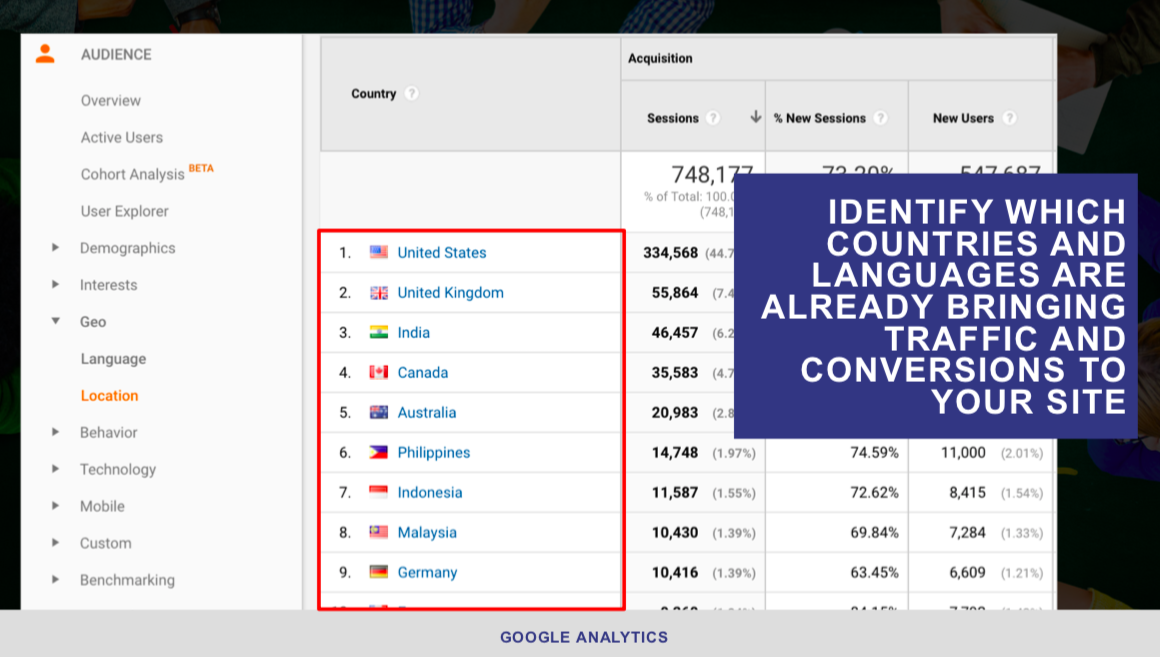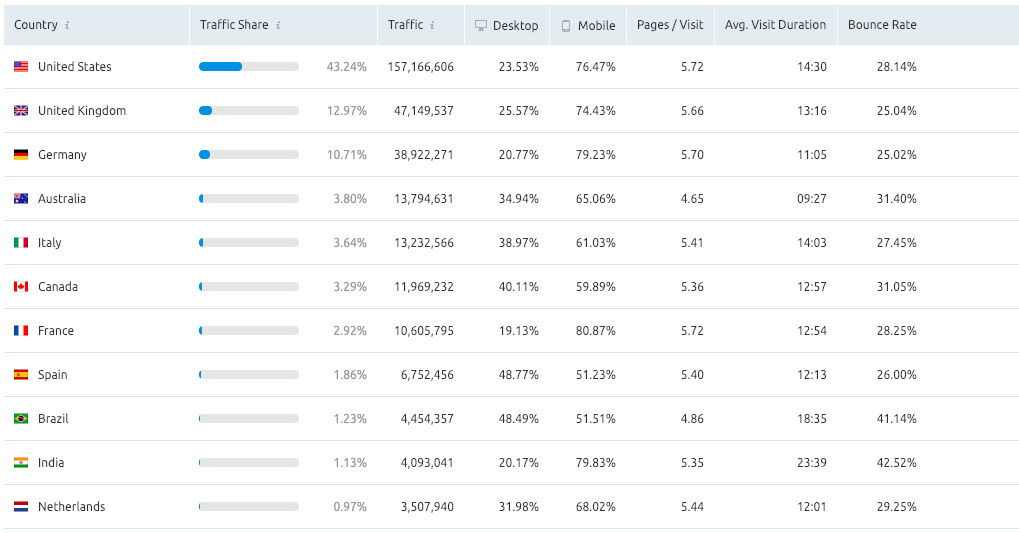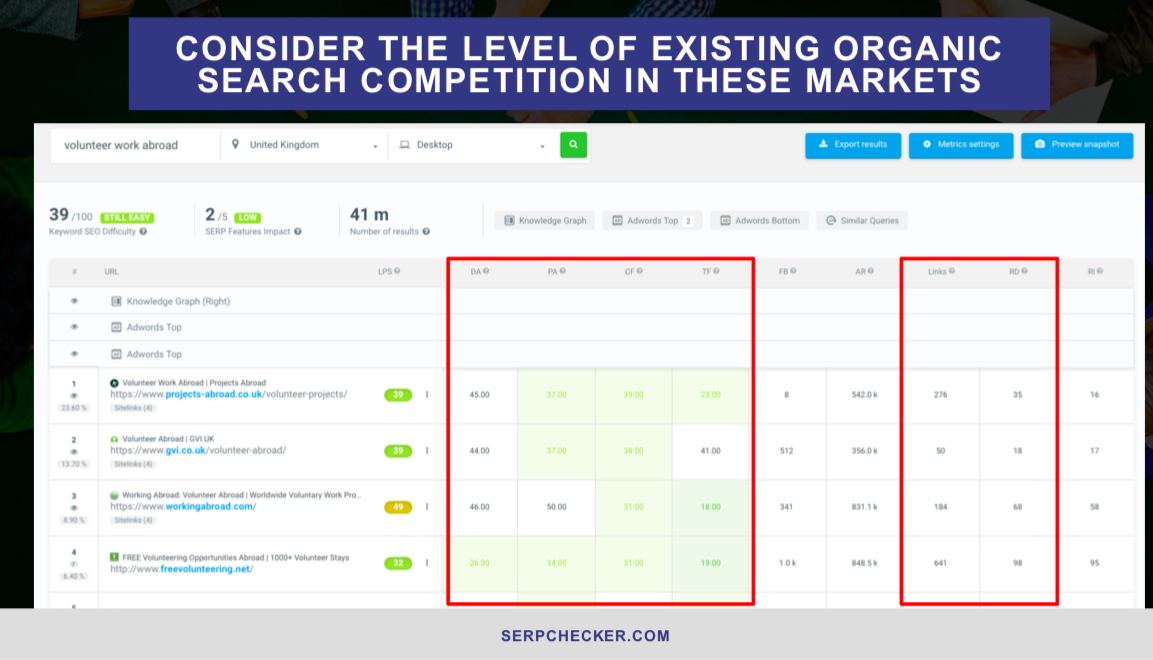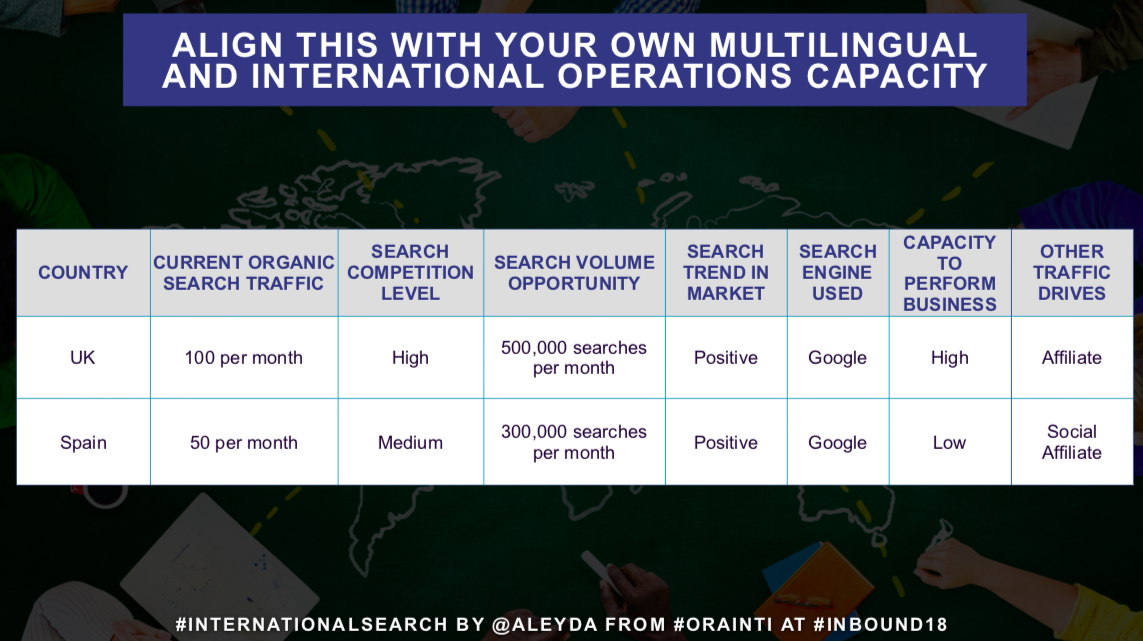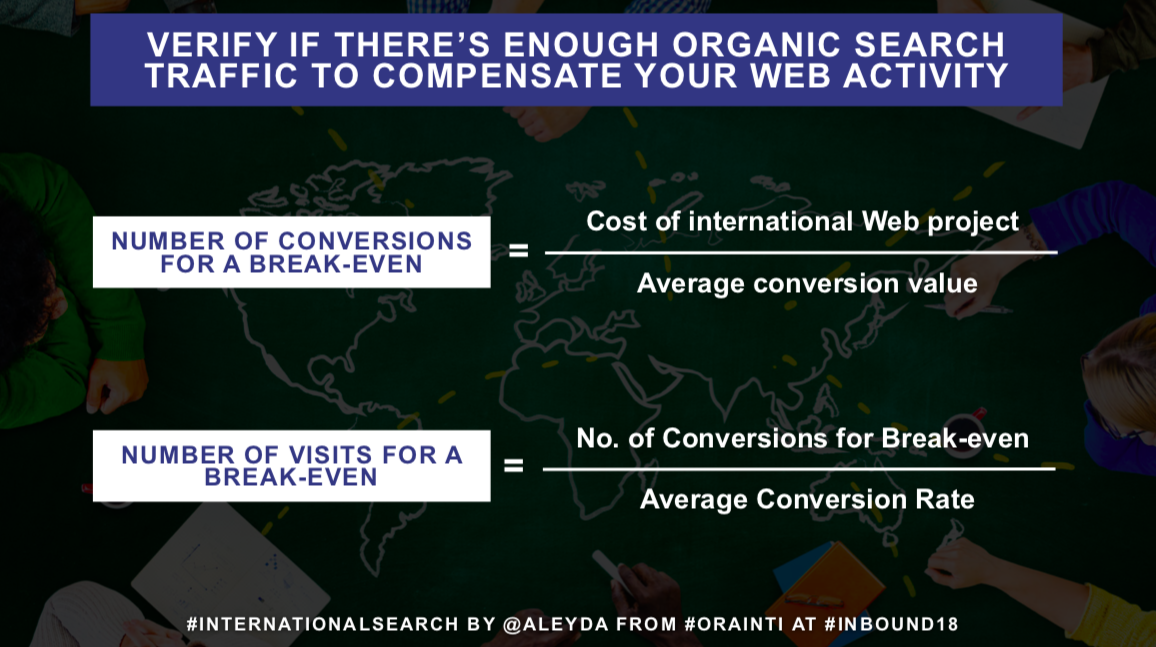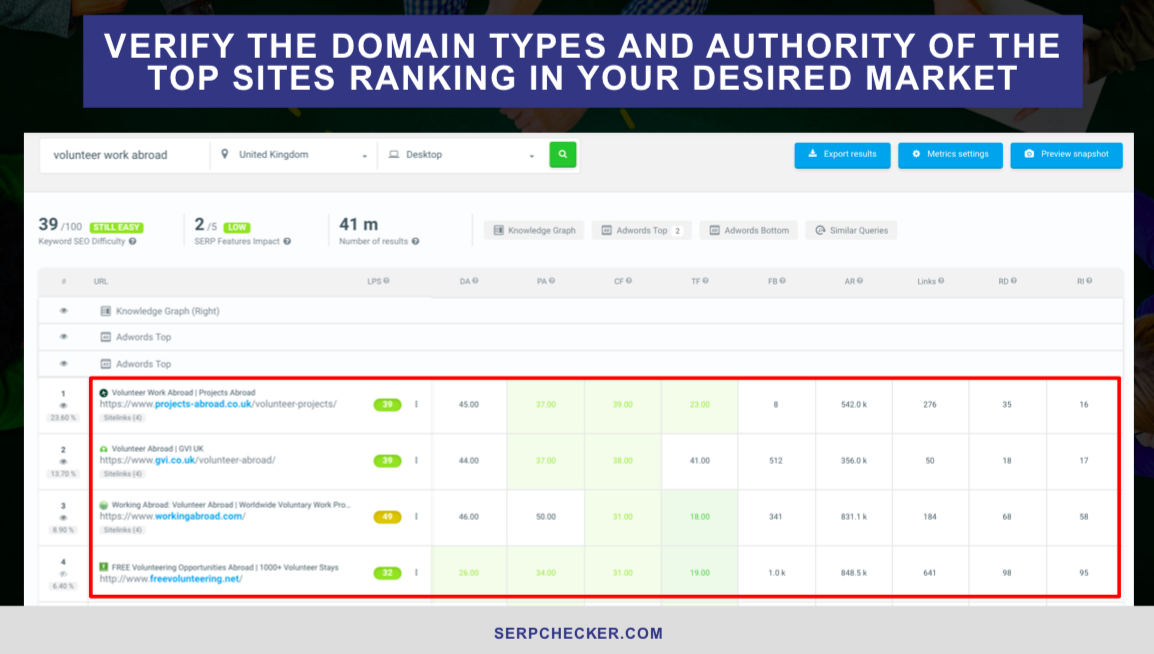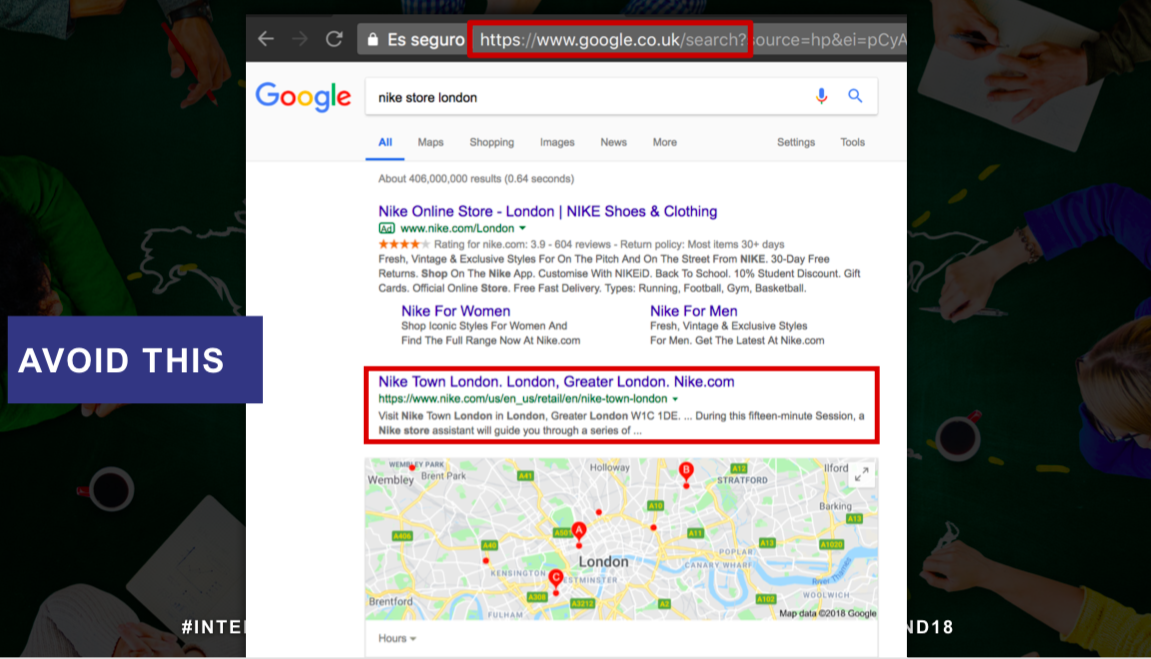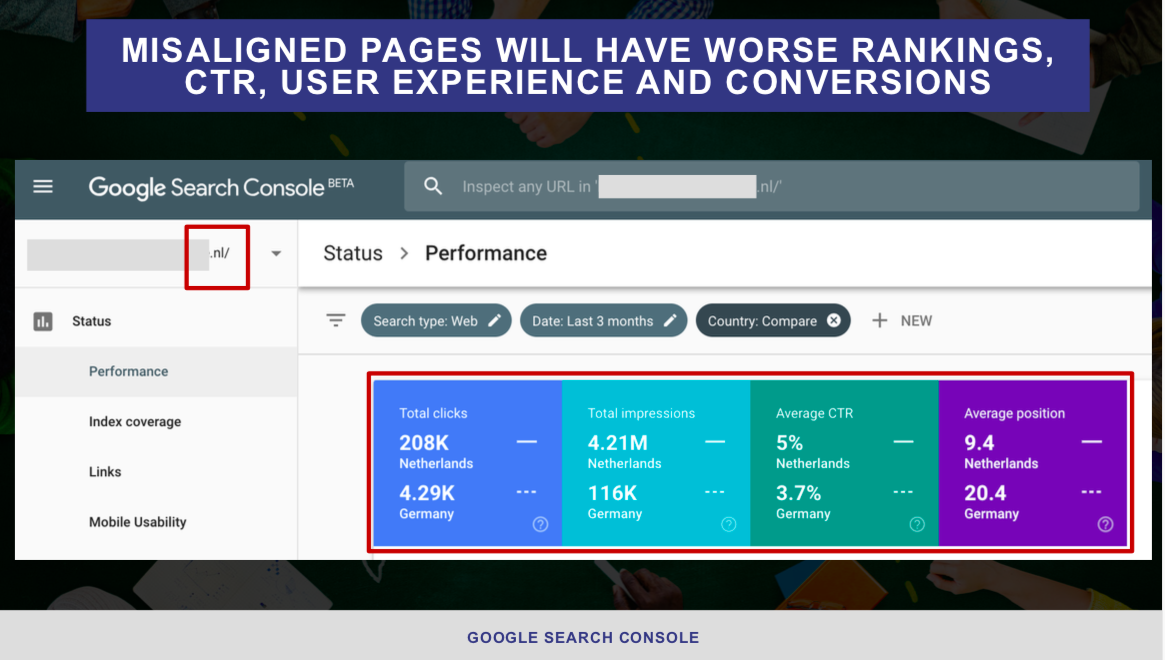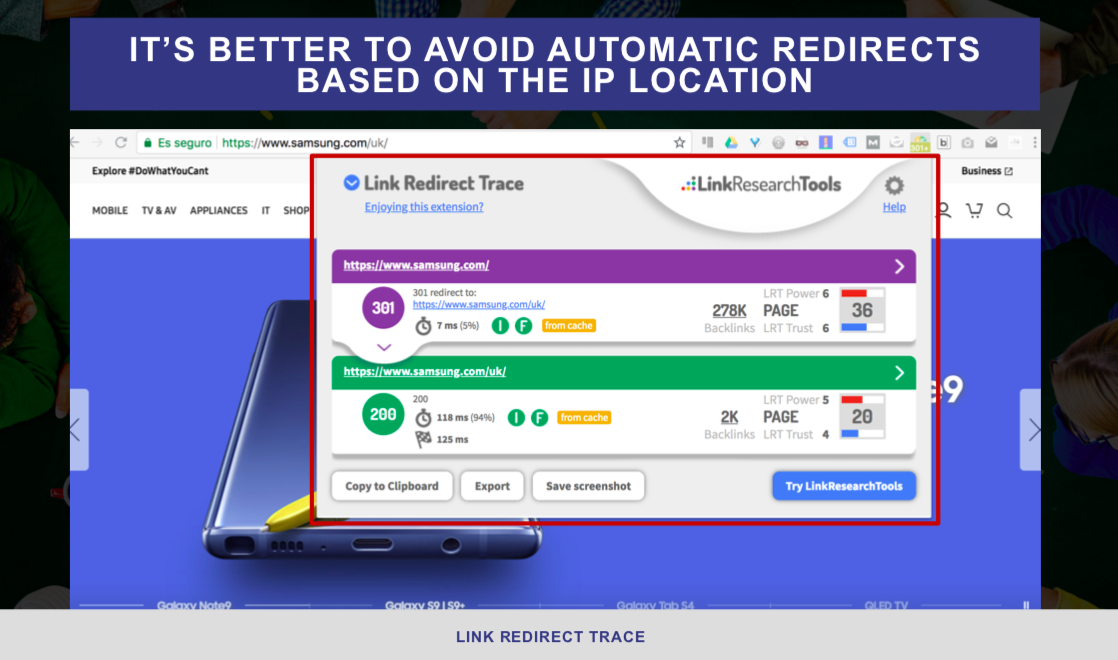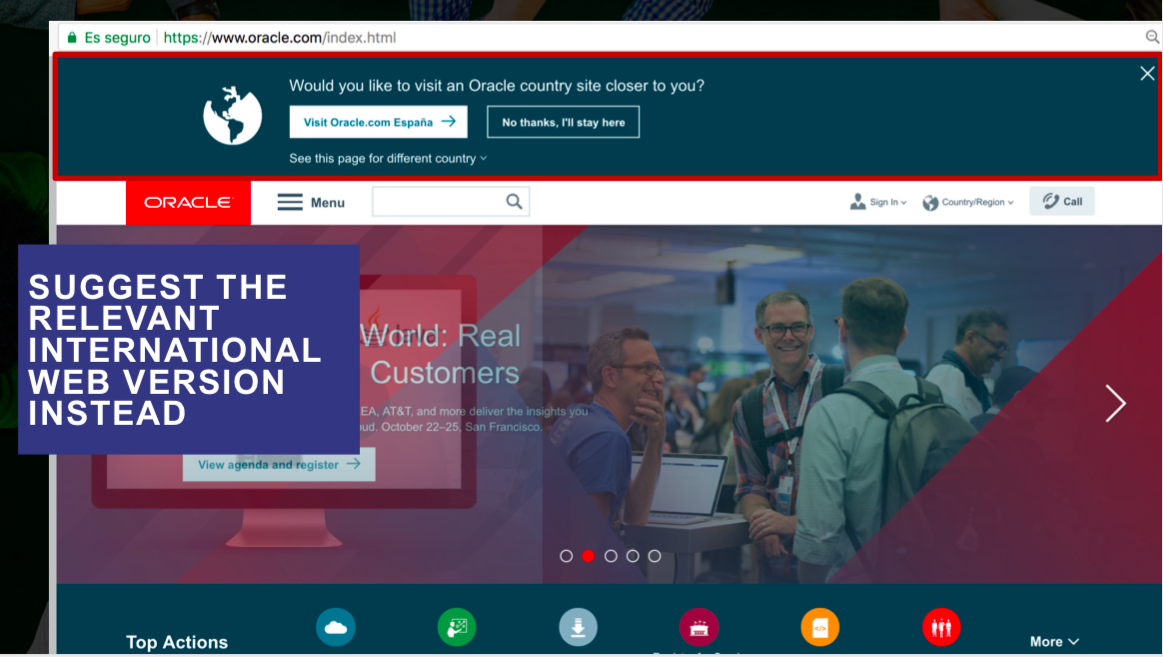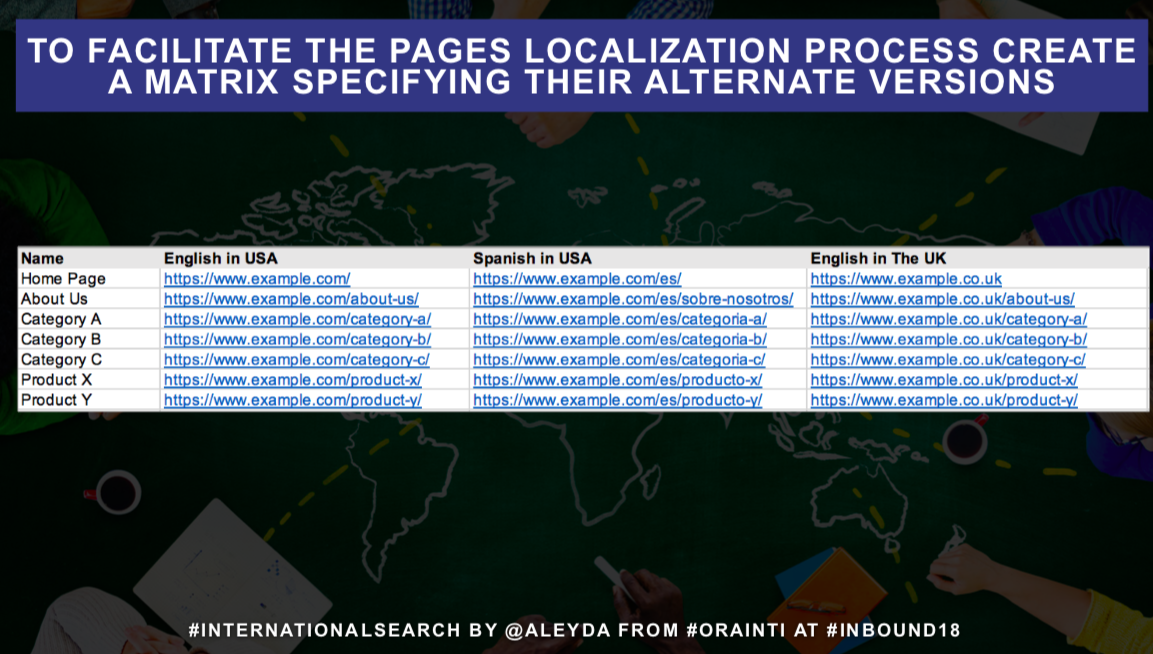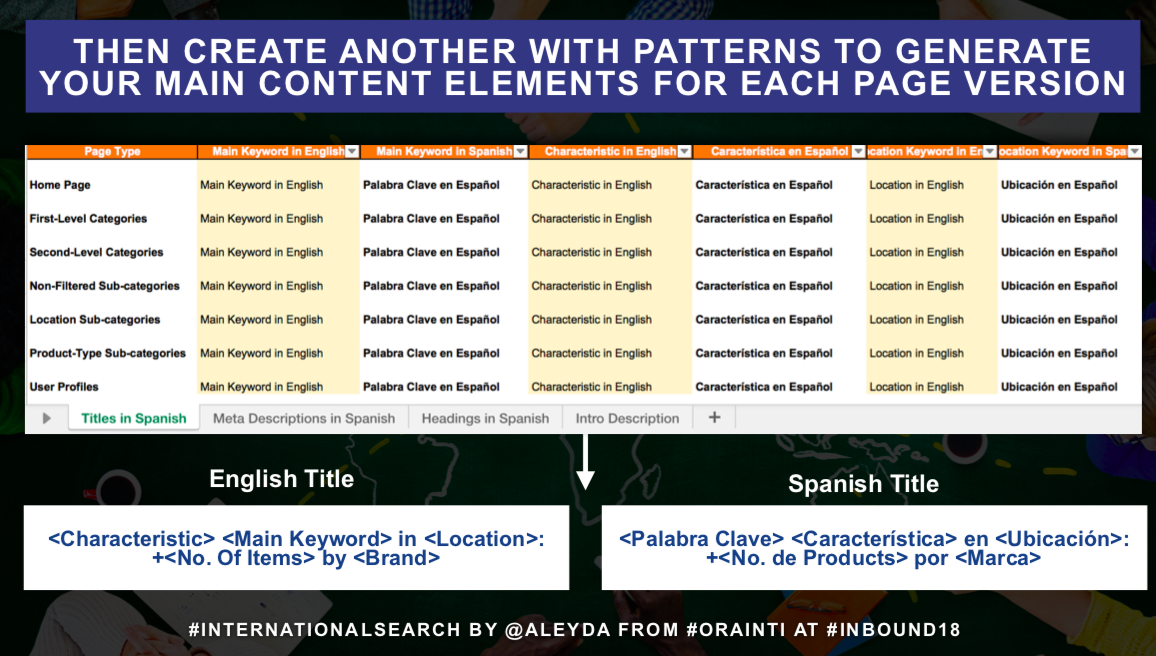Growing Your Organic Search in International Markets [INBOUND Presentation Write Up]
Entering foreign markets is a common practice for expanding your business presence, especially when you’re already a leader in your niche or you’re the top dog for an entire market.
However, expanding into a new market is a significant process that needs proper planning and validation to be successful – whether your company has retail locations like Starbucks, McDonald’s or Zara, or you are an online business like Amazon, eBay, or Eventbrite.
I had the chance to present about this topic at INBOUND 2018. You can find the slides from my presentation here.
Some of the most common reasons why expanding into a new market doesn’t always pay off include:
- Selecting non-profitable markets (Choosing a market requires research and understanding of local preferences and behavior).
- Going into too many locations at once (Spreading your resources and focus too thin).
- Not being consistent with your international targeting (It’s critical to verify if you should target languages or countries based on your business model, capacity, search potential, etc.)
- Choosing an international web structure (CTLDs, subdirectories, or domains) that doesn’t help you to correctly target to your international audiences in a competitive way.
- Skipping localization when targeting countries, and therefore not matching to the specific local search preferences and usage of specific terms and behavior, such as seasonality.
Not addressing or ignoring these factors may lead to negative international search results. I can understand how conducting this type of analysis and validation with every single potential international market might not be doable due to resources and timing constraints.
This is why my number one tip, in this case, is to prioritize the international markets you’re planning to target, identifying which are more strategically important and which are feasible to target. Only after completing this initial step should businesses move on to developing optimal web structure, and geolocating and localizing their international web presence (this is absolutely crucial).
Let’s go through the 3 fundamental steps to developing an International SEO process:
How to prioritize international markets
Which international markets should you start with? The goal should be to achieve a positive ROI with your international search presence, and therefore, it is key to prioritize based on:
- Your initial traffic and conversion performance: Which international markets are already bringing you positive results without actively targeting them?
- The traffic and conversion potential of the international markets: Which are the markets where there’s higher interest around your products, services, or content?
- The level of competition in the international markets: How difficult would it be to compete with the already established players in the market?
- The business and operational viability to target the market — from a legal, delivery, pricing, currency handling, and other perspectives, as well as alignment with broader company goals.
Let’s see how you can obtain the fundamental data to take these factors into consideration:
A. Check the countries (as well as languages) already bringing traffic to your site.
Head over to Google Analytics, navigate to Location report, and uncover the countries and languages that are already bringing you traffic and conversions.
Some countries and languages are already bringing you traffic even though you may not have any promotional activity launched in that area. You will want to identify their conversion volume and rate, as well as the top content, products, and services that these countries/languages have converted with.
You will want to do the same with Google Search Console data, identifying the specific queries bringing in organic search traffic from each market.
Identify queries with the best existing organic search visibility and traffic performance as well as their specific preferences. Are they different from your primary market?
B. Analyze which countries drive traffic to your competitors.
Use SEMrush Traffic Analytics or SimilarWeb to identify the top current countries for your traffic.
With SimilarWeb you can even find demographics and audience interests that will help you better understand the existing audience for your top competitors and assess the difference with your own. You will also be able to identify other traffic drivers for your competitors, besides search, allowing you to take additional potential marketing activities into consideration.
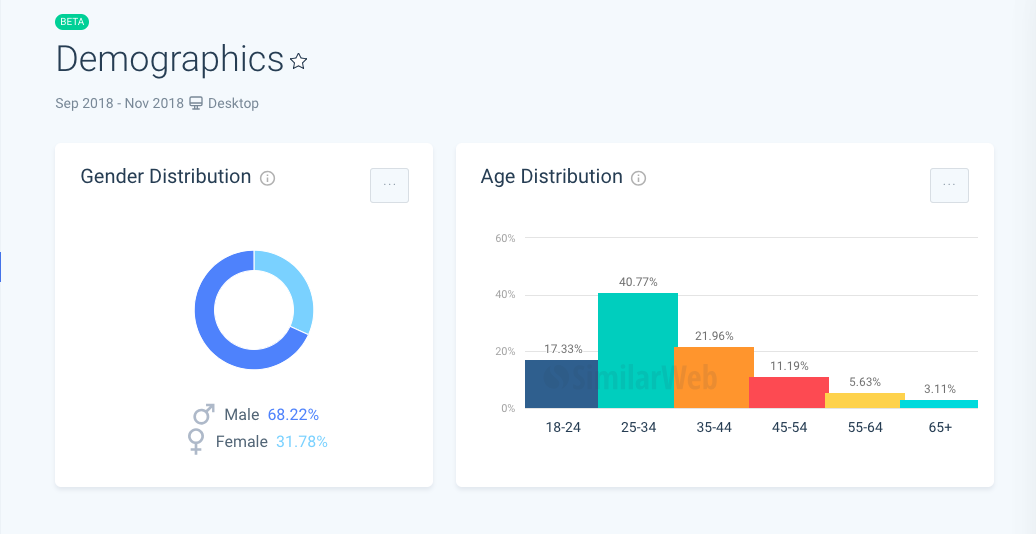
C. Identify the search volume around your top business offering, products, or services in the identified potential markets.
Use the identified country markets — from your own site, as well as competitors activities, and any other activities that you might want to validate — to check if there’s sufficient search volume in them for your site offering.
In this case, the search traffic for your top business categories and areas coming from each country will help reveal your potential buyer’s demand in the assessed markets. As a result, you can evaluate the opportunities that a new market can bring you.
I recommend using a keyword tool that supports many international markets (like SEMrush Keyword Magic Tool), as well as asking for native support to do this validation, and getting an at-a-glance-view of the potential search traffic without going through an exhaustive keyword research process (this will be actually required later on, but only for the markets that you select to target).
I feel it’s important to mention that this tool also groups the results based on the most searched keywords and word combinations, showing the search demand for subcategories, making the analysis easier.
In addition to using SEMrush, you can also use Ahrefs, Sistrix, Moz Keyword Explorer, and KWFinder for this analysis.
D. Assess the level of organic search competition in the potential market.
If you think of the new market as a terra incognita, your strategy is doomed. I can guarantee you, someone has already claimed the land to a certain extent, so you’ll need to be prepared.
Check the search results for the top identified queries in your international markets, by using Proxies, VPNs, Chrome DevTools Sensors functionality to emulate any location, or tools like SERPchecker.com to identify which websites and specific pages are already in the top ten positions. Analyze their link-related metrics as well as existing content optimization.
Who are the top players in each market? How optimized is their content? What type of domain are they using (ccTLDs, subdomains or subdirectories)? What’s their link popularity at a domain and page level? Identify the level of competitiveness that each market has by answering these among other questions.
E. Bring all the data together to assess, prioritize, and select your international markets.
Assess the previously identified data per country market to select those with the highest search traffic potential that are not too competitive yet, and that are also viable for you to target from a business, legal, operational, as well as language capacity perspective.
Can you actually deliver or provide your services or products in these countries?
Can you hire continuous native language support to help you with comprehensive keyword research, content writing and localization, potential outreach, promotion, and ongoing client support?
What are the existing resources for localization efforts (necessary even if the potential target markets speak your same language)?
Additionally, you will need to take into consideration other potential traffic drivers in each country (social, referrals, etc.) that you can use to diversify your marketing strategies and can also help you to prioritize the markets.
Targeting Countries vs Languages: Finding the Data-Driven Answer
After the previous analysis (and several cups of coffee), you’ll finally have a much-desired list of international markets to prioritize.
This list will contain countries with a high level of potential search traffic, a not so high level of competition, and alignment with your business goals and capacity.
At this point, you might want to consider that many of your prioritized markets may speak the same language, let’s say Spanish or English. You could choose to target all of them by language instead of targeting individually by country.
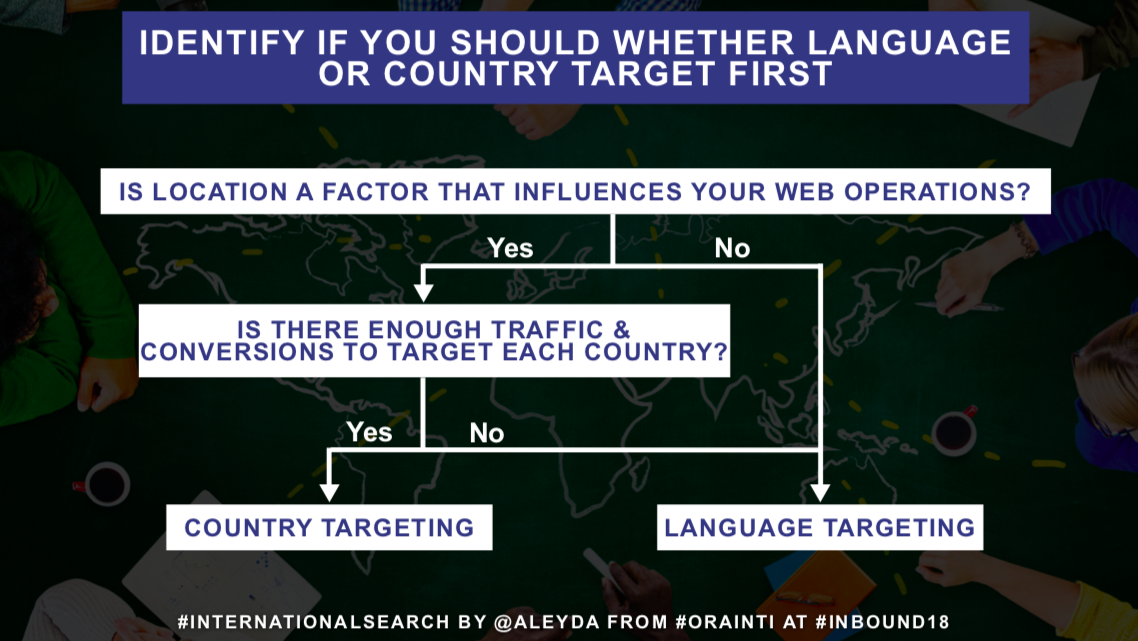
Ideally, it’s best to go with country-level targeting because you’re going to establish a much more granular and personalized approach for each audience. They will likely have different search behavior too, despite speaking the same language: from specific terms to seasonality and products preferences.
Even with English speaking countries, like the US and the UK, terms will not only differ (eg: the usage of “apartments” vs. “flats”, in the “real estate” or “property” market), but for some businesses, a specific country-focused approach will be key due to their localized nature: food delivery or real estate, for example, with queries including the name of specific locations.
On the flip side, in other industries or website types, like tech blogs, the influence of the user location is not so important, so although terms sometimes might differ, the reality is that the topic and content to be featured will be the same. Therefore, due to costs and operational constraints, it might be better to decide to target languages (at least at the start) instead of countries…especially if there are some with not enough individual traffic potential to specifically target, but are important to be in from a branding perspective.
It’s then always recommended to verify if the expected traffic from each country market will be enough for a positive ROI, and to identify the approximate number of visits you will need for a break-even. This will further validate and prioritize your markets, while potentially refining your search.
This International SEO ROI Calculator is a tool that I’ve created to help you to calculate the number of conversions and visits for a break-even.
If the results are negative for some countries and it doesn’t look like they’ll be able to provide you a positive ROI, you might want to prioritize your presence in other countries, and take the following steps in the meantime:
- Set up Google Analytics custom alerts: Be alerted when the traffic coming from a certain country or language reaches a point that would make it an economically viable target.
- Buy and secure your ccTLDs in potential countries to target: Even if you’re not targeting some of the assessed countries, it’s important to secure your presence in potential future markets.
- Launch a pilot Web version: In case your boss/management/client still isn’t convinced by the numbers and believes that entering a particular market will be beneficial regardless of what the calculations may suggest, there’s always the option of launching a pilot project to test the waters before a deep dive. You could just launch a site featuring your top products or services, and see how they perform.
Selecting the right international web structure
Your international web structure won’t only allow you to provide a relevant user experience to your international audience, but will also influence your site’s ranking in the SERPs for these markets.
Some common mistakes to avoid when setting your international web structure are:
1. Using the same URLs for every international version
It’s critical that each of your international Web versions use individual URLs to show each page content.
2. Using parameters in your URLs to feature language or country pages versions
Use subdirectories and subdomains only. If you only use a parameter to switch from a language version to another, you won’t be able to use the relevant language in the URLs, which would improve their relevance and usability. When country targeting, it’s critical to use a subdirectory or subdomains if you don’t use ccTLDs to have the option to individually register and geotarget each one of them through the Google Search Console (this can’t be done with parameters).
3. Regional domain extensions (.eu or .asia) to geolocate towards them
Google doesn’t support regional targeting (at least not yet formally), so it’s not possible to target a region like Europe or Asia as a whole. Google as a consequence treats .eu or .asia domain extensions as generic top-level domains. If you wish to target users in a certain geographical location from an international perspective, you’ll need to do it on a country level.
4. Pro’s and con’s of each international Web structure
There are 3 main international Web structure options for country targeting that you can choose from:
1. ccTLDs.
If resources and competition are not a constraint, ccTLDs will usually be the ideal option to geo-target, since you’ll be using the specific domain extension for each country, which will usually be geolocated by default (some specific exceptions are treated as gTLDs and need to also be geolocated through the Google Search Console), and will likely be better recognized by the specific country audience to be targeted to them.
However, ccTLDs are also the most expensive option. Besides having to set up, manage, and support multiple domains, you’ll need to start growing your link popularity for each one of them from scratch, which might put you at a disadvantage if you target competitive markets and you’re not a top brand in your industry.
2. Subdirectories with gTLDs
This is usually the best option when you don’t want to maintain individual domains for each country and don’t want to start with an empty link profile in a fairly competitive market. In this case, you’ll need to individually register and geolocate each subdirectory through the Google Search Console, which is doable only when using gTLDs (or the ccTLDs that Google doesn’t geolocalize by default).
Don’t try to use an existing ccTLD that is already targeted to a specific country market to target to additional ones by using subdirectories in them. All the subdirectories will already be geolocated by default to the market that the ccTLD targets and you won’t be able to change this.
3. Subdomains
Similar to subdirectories, subdomains should be geolocated in Google Search Console, however, unlike subdirectories they might be considered “independent properties” and therefore don’t provide all of the benefits that subdirectories provide. Nonetheless, subdomains can be better to organize larger and more complex sites.
So, subdomains might be an option when you can’t use subdirectories due to technical constraints but don’t have the resources to target each individual country market with their specific ccTLD.
If you’re targeting a language, then you have two options: subdirectories and subdomains. You can also combine these as sub-alternatives when targeting countries, in case there are many languages spoken in each. Both options have similar pro’s and con’s compared to country targeting scenarios, but without geolocation requirements and constraints.
To select the best international Web structure in your particular market, it’s also recommended to verify the types of properties already ranking in the top positions and to take them into consideration along with their level of link popularity.
I’ve created the following flowchart to facilitate the international Web structure decision-making process, summarizing the most important factors to take into consideration:
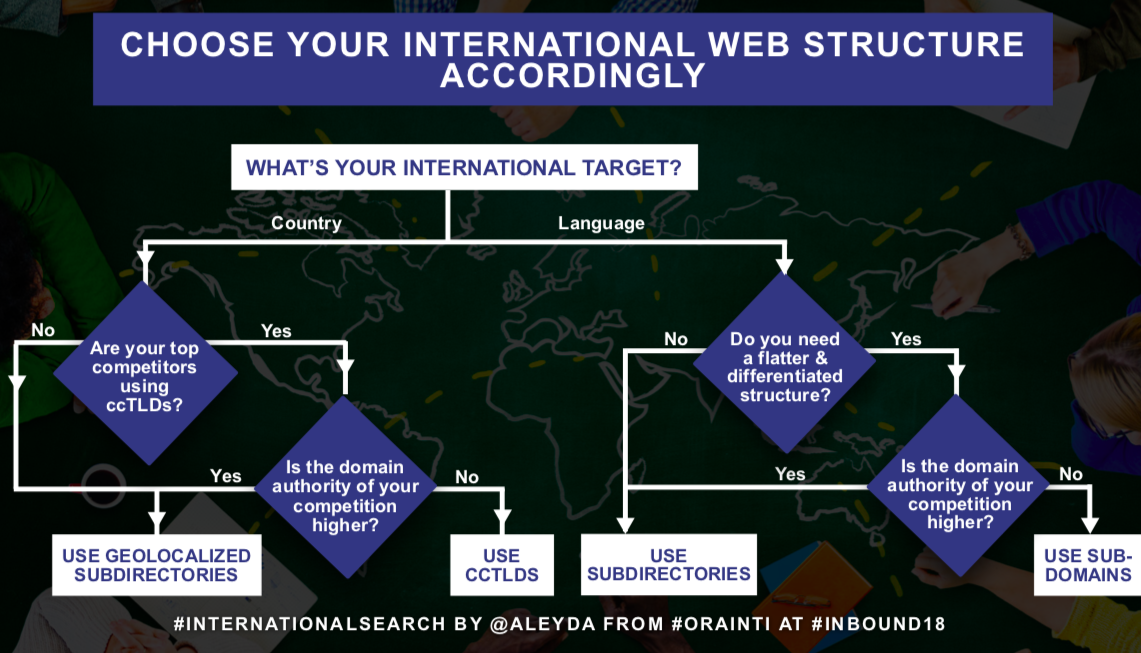
It’s also important to note, that your international Web structure should be:
- Feasible to implement and maintain in your specific situation.
- Able to provide a good base to compete with the top players in each international market.
- Consistent. Choose what allows you to grow your presence without having any conflicts or restrictions, that will make you change your configuration in the future while it could have been avoided.
Localizing your web presence
Website localization (the adaptation of your website content to target foreign consumption) goes beyond simply translating your message. You have to appeal to the user’s cultural preferences in addition to being in their local language. Besides that, localizing your content will also influence your capacity to better address your international queries and rank for them, as well as avoiding misaligned international search results (ranking with a non-relevant page for international markets).
For example, searching for “nike store london,” from within the UK, hoping to see nearby suggestions, but being shown a page from the US version instead, when there’s one on the UK site that should be shown in this case for a UK user.
This is not only negative from a user perspective as they can perceive a US-focused page as non-relevant and therefore not click on it, but also from a relevance perspective which can affect ranking as well.
You can use the Google Search Console, Sistrix, SEMrush, and Ahrefs to identify the organic search rankings coming from international markets to non-relevant versions of your pages instead of the relevant ones.
The most common reason for misaligned search results is that you might not be using a correctly geolocalized international Web structure. Even if you’re already using one, it’s important to understand that Google doesn’t only use the international Web structure to determine a content locale, but uses a number of signals: The usage of ccTLD, geolocation through the Google Search Console, hreflang annotations, content localization, links from local sites, usage of local addresses, and currency, among other signals specified here. It’s therefore important to align the highest number of them consistently to effectively specify your language and country targets.
Setting the geolocation for subdirectories or subdomains in gTLDs
To avoid misalignment issues when country targeting and using gTLDs with subdomains and subdirectories, start by geolocating each through the Google Search Console International Targeting report.
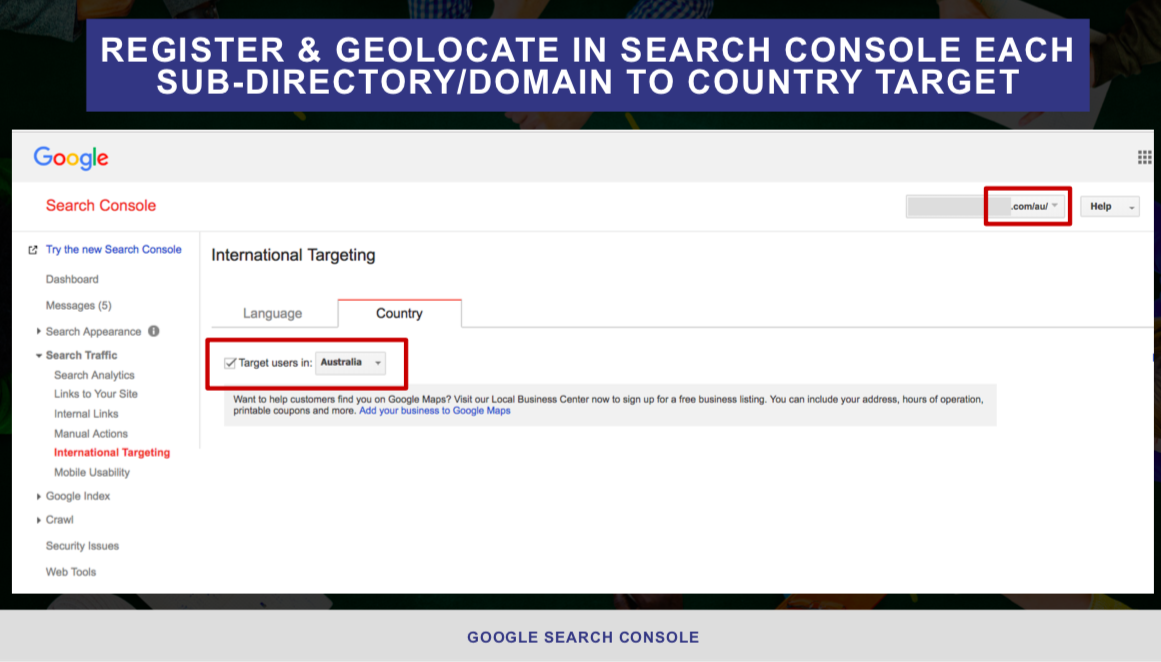
Avoid using automatic IP based redirects
It’s also better to avoid automatic redirects based on the user IP location or a user’s browser language. On one hand, it provides a bad experience by taking users to a specific international version when they haven’t requested it. On the other, Google also recommends avoiding automatic redirects based on users IP location. Search engines crawl the web from certain IPs that are mostly coming from the U.S. So if you’re going to use automatic redirects, you’ll be continuously sending GoogleBot to the U.S. version of your site, not allowing it to index the localized versions.
To make sure there are no IP based redirects, use Proxies, VPNs, or the geolocation option of Chrome DevTools “Sensors” to access your site by using local IPs.
The best way to approach this is by letting your visitors know that there’s a version of the site available that might be a better fit for them. Instead of redirecting, you can suggest another version to the user when they land on the site.
Localized content: From URLs to metadata, navigation to main information
It’s also critical to localize every aspect of your site content, besides the main information, including URLs, titles, meta descriptions, and navigation. This is when the initial keyword research should be expanded with a full, in-depth analysis. You will need native support to be able to identify and better understand not only the top terms to target, but any potential variations, the most popular areas, categories, preferences and seasonality in each market. This will help you develop, localize, and organize your content accordingly.
As I have mentioned, it’s also critical to be mindful of what could seem like subtle differences (although they might not really be so subtle) between different countries that speak the same language, for example with the usage of “soccer cleats” in the US vs “football boots” in the UK.
It’s then recommended to set up a content localization and optimization process for the different levels of pages in each category, subcategory, areas, or location to target.
Start by specifying the alternate URL for each of your international pages versions that will serve as a reference to establish different localized content and associated target queries for each. Consistency is key and will help facilitate their implementation.
You can also use this table to specify every content element on each page type. Create a matrix with patterns to generate your main content elements for each version of page type, including titles, meta descriptions, headings, and main information, making sure you feature the relevant keywords in each language for each case.
Use Hreflang annotations
Additionally, it’s recommended to specify each page language and target country, and their alternate ones along with their own language and country targets, by using hreflang annotations, as specified here.
Hreflang should use ISO 639-1 values for languages and ISO 3166-1 for countries. For example, for a page targeting English speakers in the US, the value should be of “en-us”, while the Spanish version of the same page for the U.S. should use the “es-us” value.
They can be implemented through HTML tags in the element, as well as through XML sitemaps and HTTP headers. It’s recommended to implement them through HTML with a small number of languages and/or country versions to tag, and through an XML sitemap when there’s a high number of them and there’s no flexibility to change the HTML.
An X-Default value can be also set for the unmatched international versions — those that are not targeted — to show a specific page version, as seen below.

There are some usual mistakes when implementing hreflang, such as using an incorrect language or country values, as well as setting the tags in non-indexable URL versions. These mistakes can be minimized and ultimately avoided by following these steps to plan and validate their development:
- Assess the languages and countries of hreflang implementation scope. Prioritize the hreflang implementation in the pages suffering from international ranking misalignment despite already being geolocated through other methods and localized.
- Choose the hreflang implementation method: HTML head, XML sitemaps or HTTP headers.
- Specify the hreflang code pattern. Use correct annotations and values by generating hreflang patterns using this hreflang generator for free or the hreflang builder for complex enterprise level sites.
- Make sure to implement hreflang annotations to specify the language and country target of each relevant page and their alternate page versions. This should be implemented and verified first in a test environment using SEO crawlers like Screaming Frog, Deepcrawl or Sitebulb, that include hreflang validation.
- Once the hreflang annotations are validated in a test environment, they can be launched on the live site where they should be monitored using the Google Search Console (International Targeting Report), as well as SEO crawlers or free hreflang validators like the hreflang checker.

For a longer, in-depth description of the best practices recommended to be followed for the hreflang implementation process, take a look at the steps specified here.
Conclusion
In this post, I’ve gone through the most fundamental steps to help you effectively set and expand your SEO efforts to win international markets.
As you can see, the success of your international web presence depends on the markets you choose to target, how you choose to target them, the international web structure, as well as the localization signals and alignment from both a content and technical perspective.
Following the steps in this post and addressing the factors above will help you effectively target your desired international markets, match the local audience search behavior, and compete with other high ranking sites.

